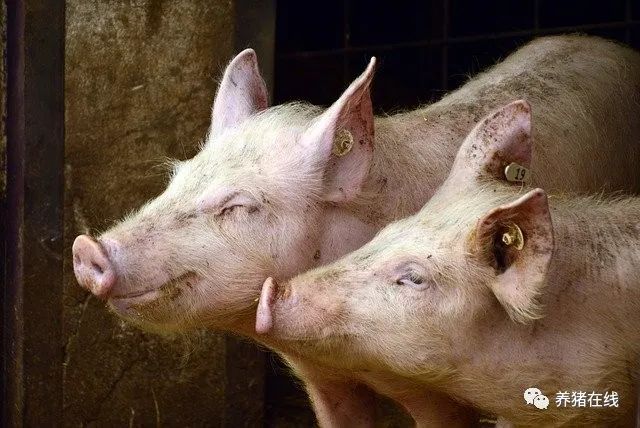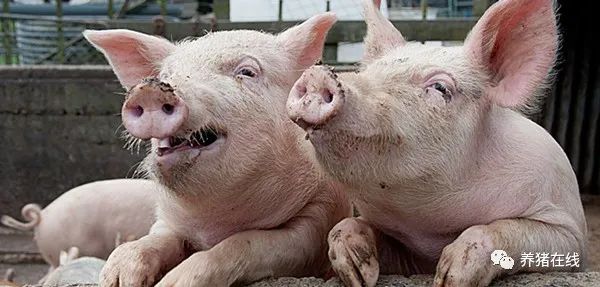How do pigs cough and wheeze and have a fever? Try the classic combination of these drugs!
As the temperature drops, respiratory diseases that give farmers a headache every year will follow. The symptoms of common respiratory diseases are cough and wheezing (dyspnea). Today, let's talk about the diseases that cause dyspnea in pigs and their prevention and treatment:
Haemophilus parasuis
Haemophilus parasuis is a common bacteria in pigs. when the resistance of pigs decreases due to disease or environmental stress, the bacteria will take advantage of deficiency to cause disease in pigs. the common clinical symptoms are dyspnea, fever, progressive weight loss and rough coat.
Anatomy showed that the pleural and abdominal effusion increased, the heart was covered with cellulose exudation, and in severe cases, the organs were wrapped by cellulose exudation. Symptoms such as joint enlargement and encephalitis can also be seen in diseased pigs.

Prevention:
1. Strengthening the prevention and control of immunosuppressive diseases such as blue ear, ring and mycoplasma is very important to the prevention and control of the disease.
2. Reducing the stress of pigs, controlling the temperature difference, increasing the temperature in the house and reducing the range of temperature difference are all helpful to the prevention and control of the disease.
3. Drug addition: at present, the drugs sensitive to Haemophilus parasuis include, but not limited to, tilmicosin, florfenicol + doxycycline, enrofloxacin + ceftiofur sodium and so on.
Treatment:
Haemophilus parasuis causes the disease of pigs in addition to the role of bacteria, but also produces a large amount of endotoxin, so the treatment of the disease is not good, and the cure rate is relatively low.
1. Individual pigs: intramuscular injection of astragalus polysaccharide injection + Yinhuang injection + ceftiofur sodium.
2. Large group: add Yinhuang soluble powder / Shuanghuanglian soluble powder + tilmicosin / florfenicol + doxycycline in the feed.
Infectious pleuropneumonia
Infectious pleuropneumonia is susceptible from nursing pigs to fattening pigs, especially in pig houses with poor ventilation, and the disease is more likely to occur when the feeding density is high. Clinically, it can be seen that high fever, peripheral skin cyanosis, abdominal breathing, blood white foam outflow from the nose after death. Autopsy showed a small amount of fibrinous exudation in the chest and severe congestion in the lungs.
Prevention:
1. Reduce the density of pigs and ensure the air quality and temperature in the house.
2. Prevention should be strengthened during swine herding and influenza.
3. Drug addition: at present, sensitive drugs to infectious pleuropneumonia include, but not limited to, florfenicol, tilmicosin, tylosin + sulfonamide, enrofloxacin, cephalosporin, etc.
Treatment:
Pay attention to the improvement of the air quality of the pig house, the treatment of serious pigs should first alleviate pulmonary edema, anti-inflammation, and then use antibiotics against bacteria.
1. Individual pigs: intramuscular furosemide + dexamethasone, Yinhuang injection and florfenicol injection
2. Group pigs: Yinhuang soluble powder / florfenicol powder + tilmicosin / tylosin + Ma Xingshi dry powder emergency prevention and control.
- Prev

Experience in treating swine respiratory tract diseases, not only antibiotics!
Experience in treating swine respiratory tract diseases, not only antibiotics!
- Next

Several good ways to treat porcine asthma! Do you know everything?
Several good ways to treat porcine asthma! Do you know everything?
Related
- On the eggshell is a badge full of pride. British Poultry Egg Market and Consumer observation
- British study: 72% of Britons are willing to buy native eggs raised by insects
- Guidelines for friendly egg production revised the increase of space in chicken sheds can not be forced to change feathers and lay eggs.
- Risk of delay in customs clearance Australia suspends lobster exports to China
- Pig semen-the Vector of virus Transmission (4)
- Pig semen-the Vector of virus Transmission (3)
- Five common causes of difficult control of classical swine fever in clinic and their countermeasures
- Foot-and-mouth disease is the most effective way to prevent it!
- PED is the number one killer of piglets and has to be guarded against in autumn and winter.
- What is "yellow fat pig"? Have you ever heard the pig collector talk about "yellow fat pig"?

